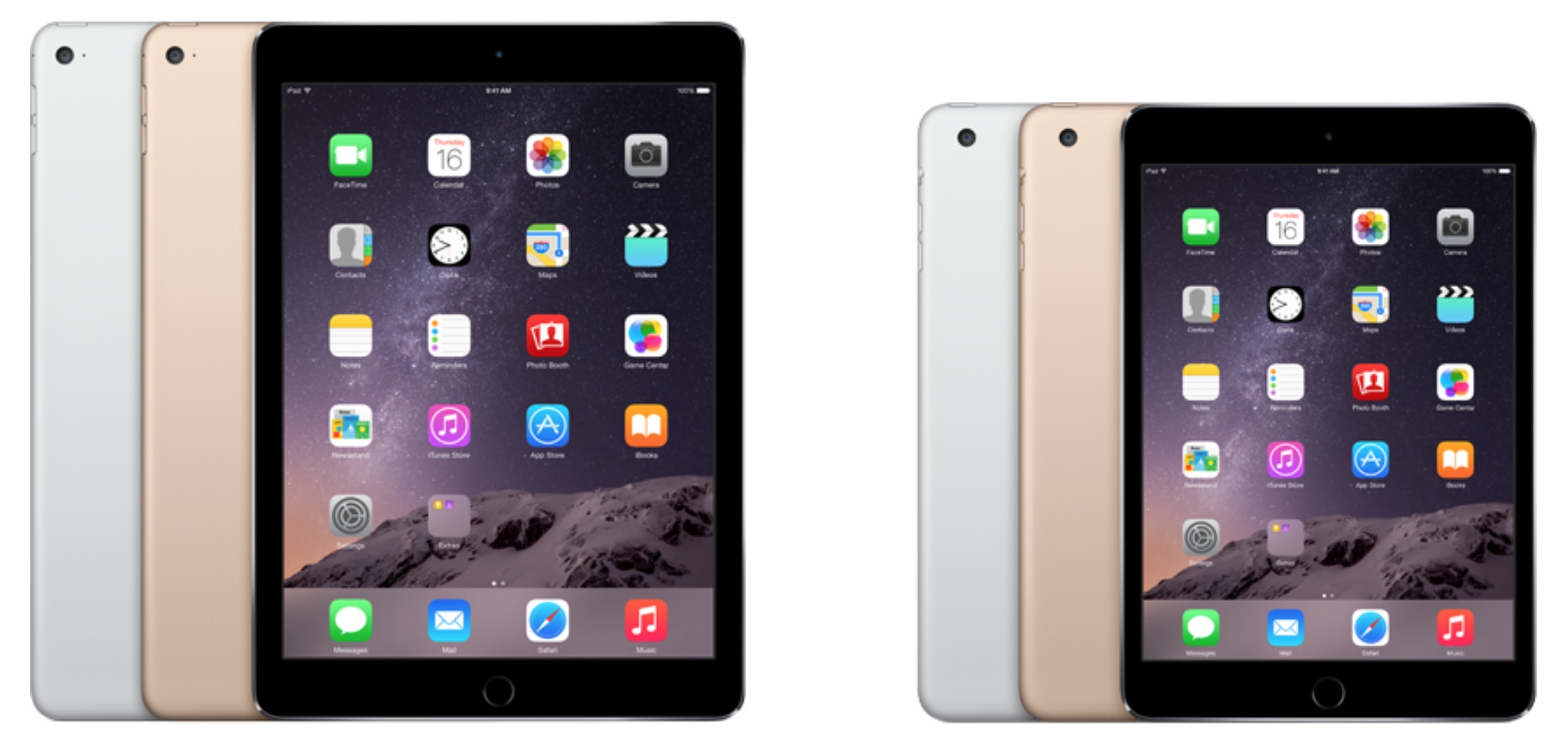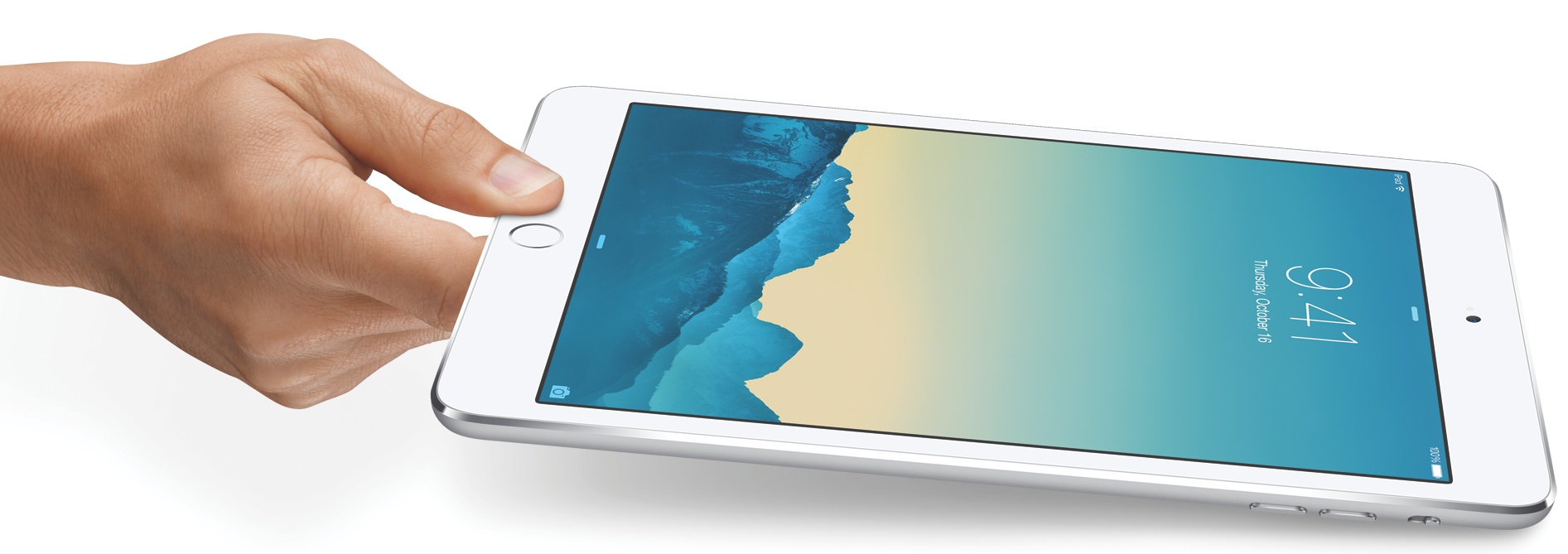Deciding between the original iPad mini and the iPad 4 was tedious due to a feature gap stemming from the notable hardware differences between the two. On the other hand, the choice between the iPad mini with Retina display (or the iPad mini 2, as it’s now called) was a no-brainer. Both came outfitted with essentially the same hardware— from the sensors to the A7/M7 chips to the cameras — so the decision came down to picking your preferred screen size.
That said, brain work is required to make an informed purchasing decision concerning the latest iPads. In case you missed it, Apple’s brought minor changes to the iPad mini 3 and the device got only like thirty seconds of stage time. Conversely, the iPad Air 2 is a much more substantial upgrade.
Here are ten iPad Air 2 features that the iPad mini 3 lacks which make the bigger model a better buy and arguably the right device to boost your tablet computing.
1. Fully laminated Retina display
The iPad Air 2, the first Apple tablet with the fully laminated display. We’re talking about the same process technology Apple uses in iPhone manufacturing, which makes the images appear as if they were painted directly on the glass. By combining the three separate screen layers — the cover glass, touch sensor and LCD — into one, optical bonding doesn’t just eliminate the gaps between the layers, but gets rid of the internal reflectance caused by those gaps. In turn, you’ll enjoy richer colors, better contrast and sharper, more vivid images overall on the iPad Air 2.
2. Antireflective screen coating
With a custom-designed antireflective coating, the iPad Air 2 reduces glare by a whopping 56 percent, making it “the least reflective tablet in the world”. The new mini doesn’t have it, meaning its 7.9-inch Retina screen just isn’t as clear and readable in different kinds of environments as the iPad Air 2’s 9.7-inch panel is.
3. Thinner profile
At just 6.1 millimeters, the iPad Air 2 is the thinnest iPad yet. By comparison, the iPad mini 3 is the iPad Air-7.5 millimeters thick. You may not care about thinness at all, but many people do and the 1.4 millimeter difference is definitely visible to the naked eye.
4. A8X processor
With a billion more transistors and faster architecture, the iPad Air 2’s new A8X processor delivers a 40 percent gain in compute performance and more than double the graphics performance (2.5 times faster, to be precise) versus the A7 chip ticking inside the iPad mini 3 (and the previous iPad Air). Your apps and games will run a lot smoother on the iPad Air 2 and iOS 8 will be more responsive and fluid on it compared to the iPad mini 3. And thanks to the A8X, the iPad Air 2’s cameras have enhanced face detection and better noise reduction.
5. M8 motion coprocessor
The iPad mini 3 still contains the last year’s M7 motion coprocessor whereas its bigger sibling packs in the latest M8 chip that debuted last month on the new iPhones. Whereas the M7 continuously measures data from the accelerometer, compass and gyroscope sensors without taxing the main processor, the M8 adds support for a new barometer sensor. And because it continuously calibrates all five sensors — barometer, gyroscope, accelerometer, GPS and compass — the M8 helps improve power efficiency.
6. Better iSight and FaceTime HD cameras
The iPad Air 2’s rear camera is an improved eight-megapixel sensor taking advantage of the powerful image signal processor in the A8X chip. The iPad mini 3’s has remained stuck at five megapixels. Because it’s the same shooter as the previous model, the iPad mini 3 is incapable of delivering photographs as sharp and vivid as the iPad Air 2.
Moreover, its front-facing camera is virtually unchanged, as opposed to the iPad Air 2’s FaceTime HD shooter with an improved sensor for crisper video calls, even in low light. In short, you’ll take better selfies on the iPad Air 2.
7. Burst mode
The iPad mini 3 does’t support Burst camera mode because that feature requires the A8X processor, which the mini doesn’t have. Compared this to the iPad Air 2, which lets you fire off ten photos per second, with the software automatically detecting smiles and blinks to pick the best shot.
8. Slow-mo video capture
The iPad Air 2 can shoot dramatic slow-motion videos at 120 frames per second, a feature not found on the new mini. In fact, the iPad Air 2 is the first iPad with Burst mode support.
9. Three times faster 802.11ac Wi-Fi
Compared to the iPad mini 3, the iPad Air 2 packs more than twice as fast Wi-Fi as before with theoretical speeds up to 866Mbps. This translates into waiting less as web pages load, smoother YouTube streaming and simply more enjoyable Wi-Fi performance. Before you jump with joy, a compatible 802.11ac router is needed to take full advantage of the iPad Air 2’s faster Wi-Fi. Apple’s latest AirPort Time Capsule and AirPort Extreme base station feature 802.11ac Wi-Fi.
10. Barometer sensor
An all-new barometer, exclusive to the iPad Air 2 and new iPhones, senses air pressure to provide relative elevation that can be fed to iOS 8’s Motion app. You just can’t do that on the iPad mini 3 without using a specialized accessory compatible with Apple’s HealthKit.
It would be premature to say that Apple has deliberately underpowered the iPad mini 3 in order to push undecided shoppers toward a pricier iPad Air 2. If you ask me, engineering teams have been spread thin and may not have had enough time to pack all of the new features into a smaller device yet.
Apple will continue to sell both previous versions of the iPad mini and the original iPad Air at reduced prices starting at $249 and $399, respectively.
Speaking or prices, 16/64/128GB iPad Air 2 models are $499/$599/$699 while the iPad mini 3 will run you $399/$499/$599 for the same 16/64/128GB storage tiers.
Add an extra $130 for 4G LTE cellular connectivity.
Are you disappointed that the latest iPad mini doesn’t keep up with the iPad Air 2 hardware-wise? Do the aforementioned goodies justify the iPad Air 2’s higher price tag, do you think?
And finally, are the aforementioned hardware features worth an extra $100?
For more in tech specs wars, check out Jeff’s quick and dirty iPad Air 2 vs iPad Air comparison.


